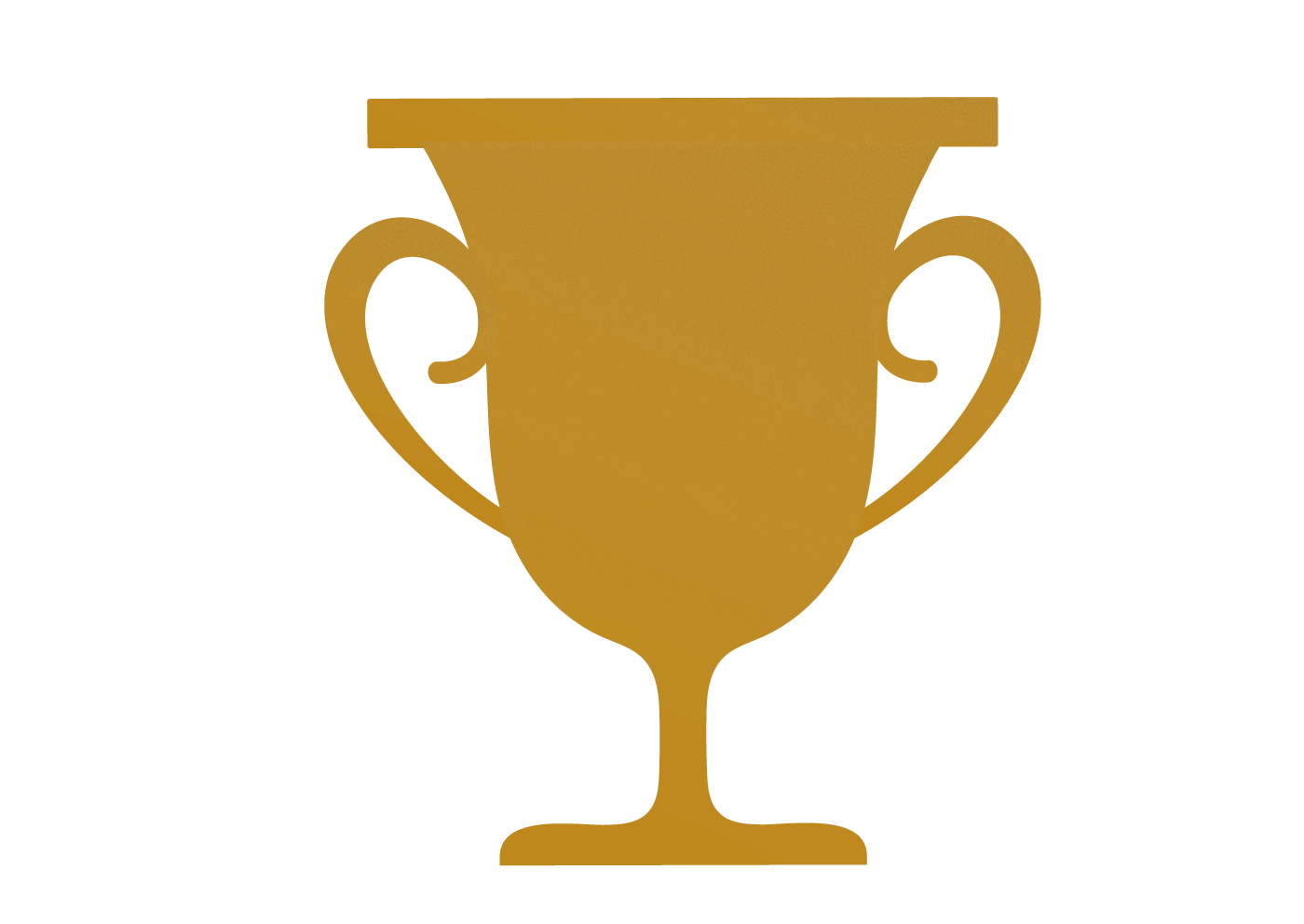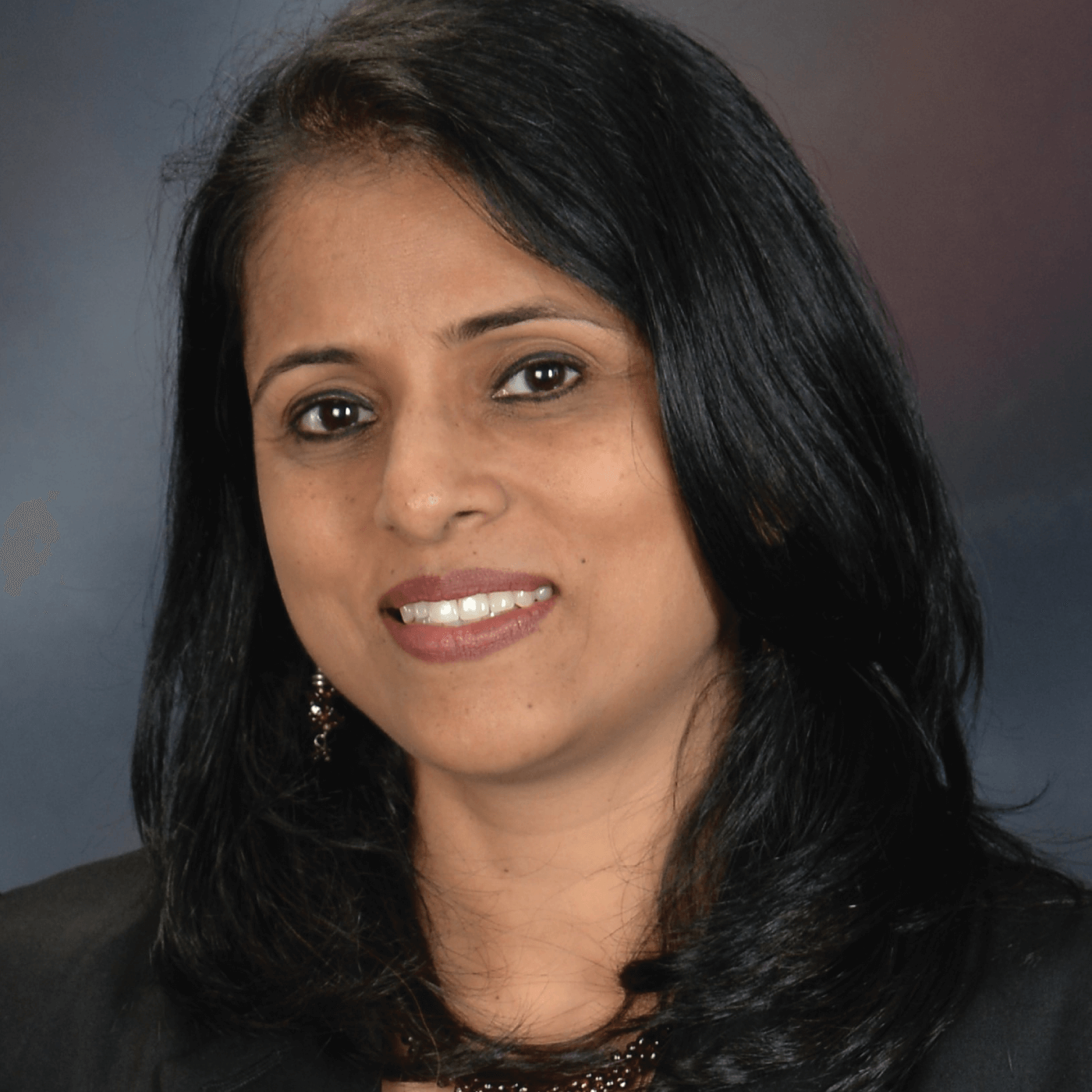
Julia Haller, Ophthalmologist-in-Chief at Wills Eye Hospital and Professor and Chair of Ophthalmology at the Sidney Kimmel Medical College at Thomas Jefferson University in Philadelphia, Pennsylvania, USA
Soosan Jacob, Director and Chief or Dr Agarwal’s Refractive and Cornea Foundation, Senior Consultant of Cataract and Glaucoma Services at Dr Agarwal’s Group of Eye Hospitals, based in Chennai, India
Anat Loewenstein, Chair of the Division of Ophthalmology at the Tel Aviv Medical Center and Vice Dean, Sackler Faculty of Medicine at the Tel Aviv University, Israel
Cynthia Roberts, Professor of Ophthalmology & Visual Sciences and Biomedical Engineering, and Chair for Research in Ophthalmology at The Ohio State University in Columbus, Ohio, USA
and Louisa Wickham, Clinical Director at Moorfields Eye Hospital NHS Foundation Trust in London, UK
Click here or scroll down to watch the roundtable
What were your early years like, and was there anyone who particularly inspired you to pursue your STEM goals?
Soosan Jacob: I grew up in India, and my father was an army officer, and a military doctor. My early childhood was marked by transfers, changing schools every two years, making new friends – all of which brought with it advantages and disadvantages. I think it taught me resilience, ability to adapt to various situations and rise to the challenges I have faced. In some places, we would live very far from my schools, so there would be periods of a few years when I had school commutes taking three hours out of my day. As a child, you don’t see it as a hardship, and they were fun times, as I had friends traveling with me.
In India, there were two sought after profession choices for a child: an engineer and a doctor. I wasn’t very keen on engineering, so the other profession was a natural choice for me. I have an uncle who is an ophthalmologist, and he was a great, inspiring role model, so medicine – and ophthalmology in particular – followed me from quite an early childhood and really shaped me. My father was very persistent that I should do well in life; he was always extremely encouraging and kept a close eye on my well-being – something he does to this day with my children.
Louisa Wickham: I was the first doctor in my family, and didn’t have any medics around me, but my mother recalls me role playing medical scenarios in my childhood. When someone commented that I was a nurse, I would firmly correct them and emphasize that I was most definitely a doctor. Both my mother and grandmother were very strong women who worked throughout my childhood, which gave me great role models of high-achieving women being leaders in their fields. My school also had an ethos of encouraging girls to aim high, especially in science, which is not a common theme for schools, where girls are often encouraged to focus on humanities and arts. Throughout my education, I had a very keen interest in science, and I knew I wanted to be a doctor. Like Anat, I had one brief moment when I told my mother that perhaps I would choose another career, and she made me visit a friend of hers who was a physician, as she was certain that was what I ultimately wanted to do. I was always encouraged by her, and never regretted my decision of choosing medicine. I do think that ophthalmology is “the thinking person’s surgery.” It’s a really beautiful mix of being surgical with the cerebral aspect of having to think about patients – so much manifests through the eyes, so we are constantly thinking of the big picture, not just the next surgery.
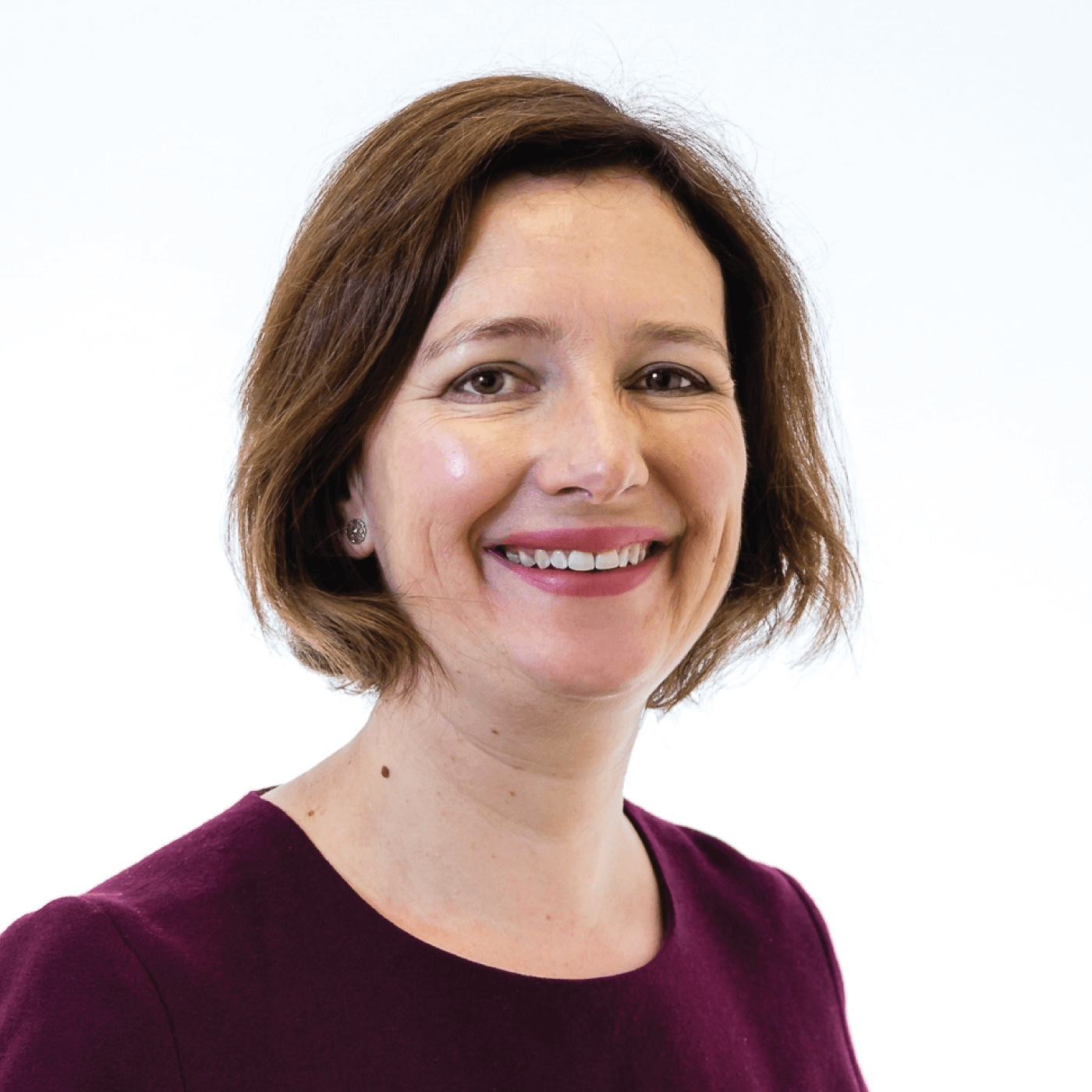
Anat Loewenstein: I had no other option open to me – ever since I was a child, I knew that I was going to be a physician. My grandfather was a doctor, and so was my mother; she was a cardiologist and practiced medicine until the day she died, aged 89. She actually found me a husband, as Julia Haller can confirm! My mother always emphasized to me and my brother, who is a general surgeon, that we need to do something that will really make a difference, and for that we have to excel in our fields – be the best in everything we did. When I suggested I could become a dancer, she responded that I would only be a mediocre dancer, and I should aim to be a great doctor instead. As early as aged seven, I remember reading her medical books and translating some of the text into Hebrew, and the need to excel in medicine has followed me since then, throughout my life.
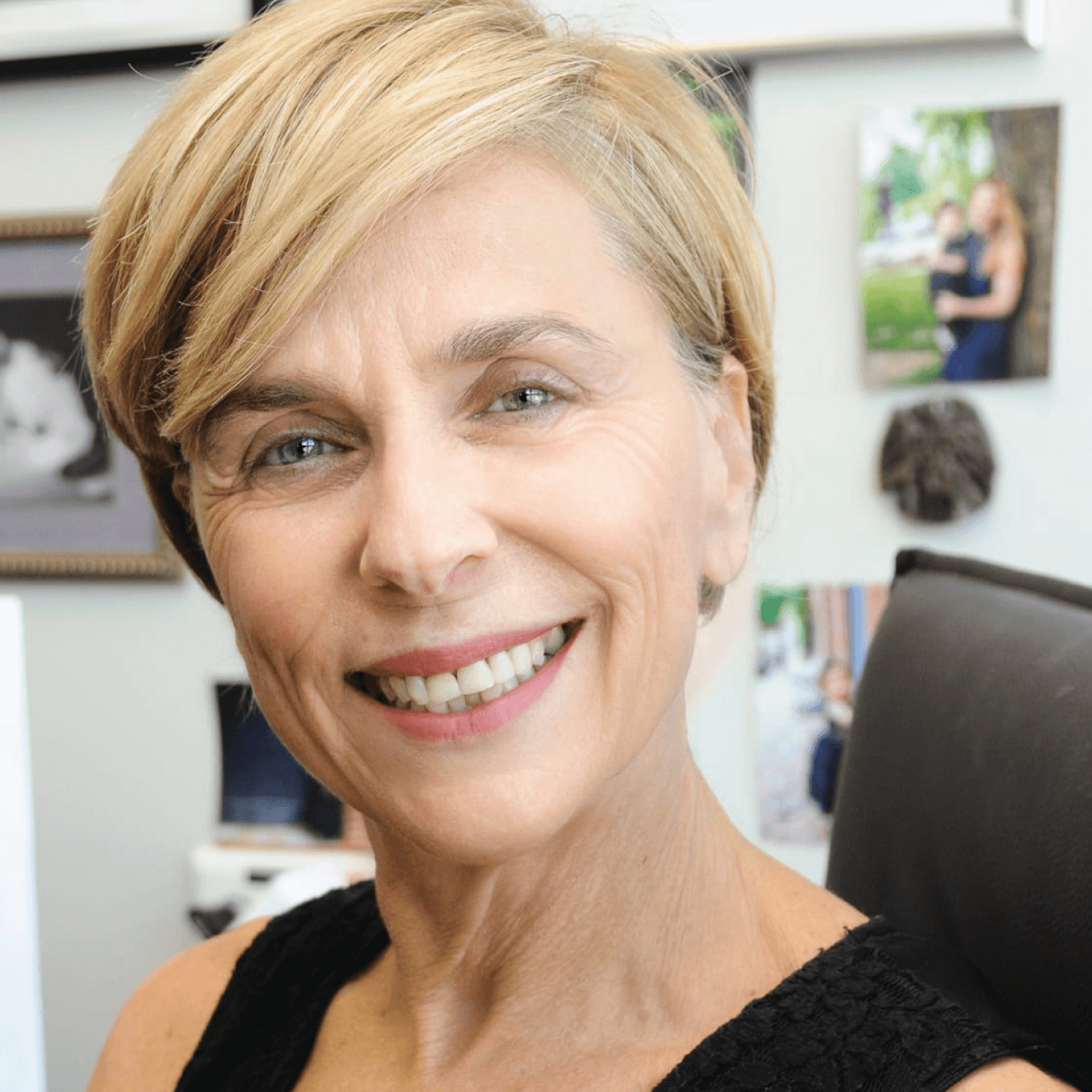
Cynthia Roberts: My father was not only a trauma surgeon, but also a professor. We had professors coming to our home all the time when I was a child, so I was around academics from a very early age. I chose nursing as my undergraduate education, and worked as a nurse for four years, until I realized that it wasn’t for me. I worked in a coronary intensive care unit, and I saw death and disaster every day, which was very hard for me emotionally.
Unfortunately, I wasn’t exposed to ophthalmology, which obviously doesn’t have a lot of mortality associated with it! Instead, I went back to school to study biomedical engineering, and I became interested in optometry applications in the early days of refractive surgery. I listened to my father, who taught me to take advantage of opportunities as they presented themselves; in fact, I’m still waiting for those opportunities to go away as they keep cropping up all the time! I feel that I have made important contributions to the field without being an ophthalmologist, and I’ve had an impact on patients’ lives, on treatments, and physicians’ understanding of some concepts affecting disease development and progression – the biomechanics of the eye.
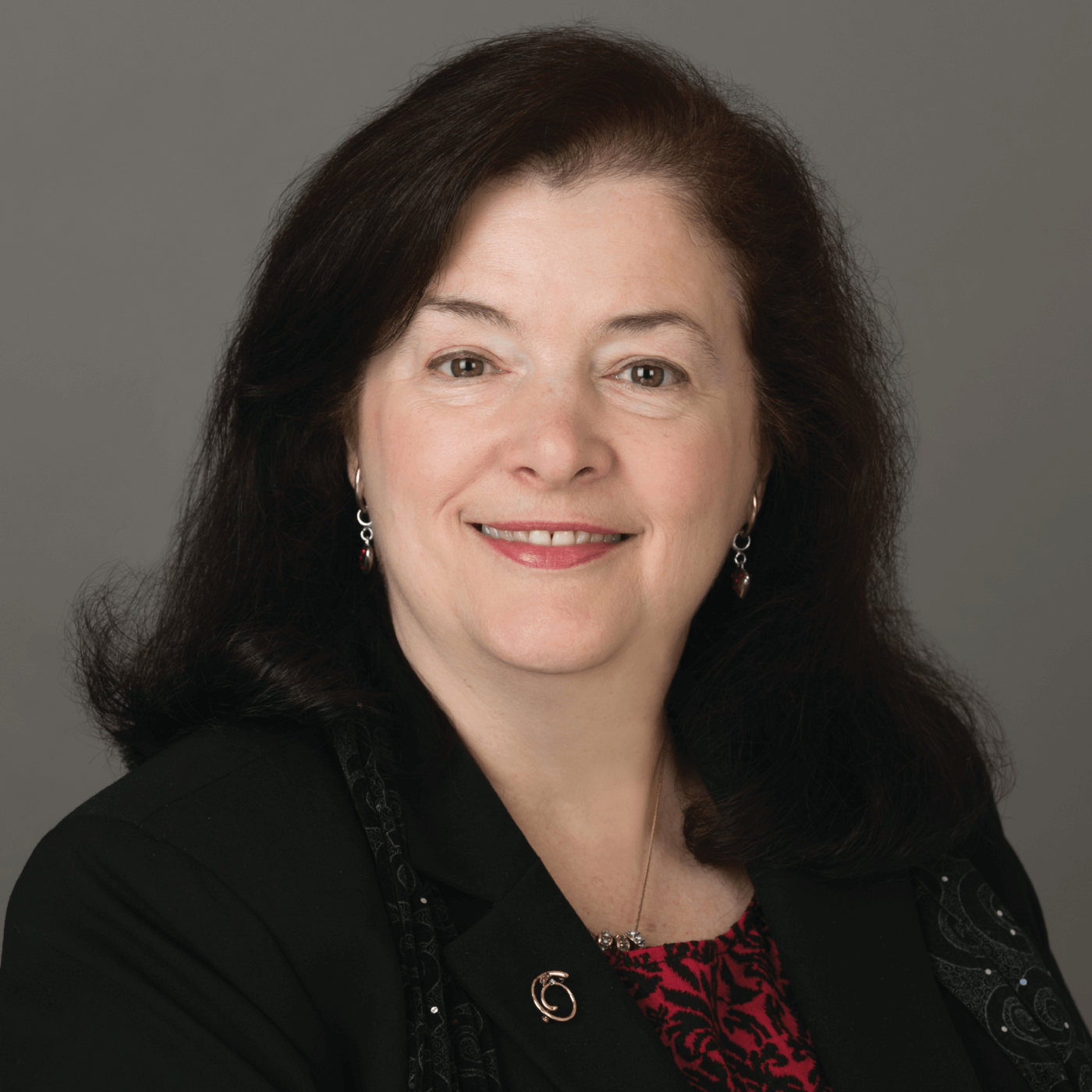
AL: Indeed, a physician can help one patient with two eyes at a time, whereas a researcher or an entrepreneur can help thousands of people with one finding.
CR: I feel that I can convey complicated topics in a manner that people without the ophthalmic or engineering background will understand. Ophthalmologists and researchers like myself approach the same problems from different perspectives, and it’s very important that we listen to each other to make progress. Many engineers start from equations, and I don’t think that’s the right approach – you have to start by speaking to the person or group you’re aiming to help.
Julia Haller: I grew up with parents working in medicine: my father was a pediatric surgeon at Johns Hopkins, and my mother is an obstetrician. I originally gravitated towards non-scientific subjects, and I think I was eventually attracted to medicine because of its humanism, and interactions with people. It has also been intellectually stimulating. I saw my parents surrounded by people who really enjoyed what they did and had mission-driven lives – I was growing up in a Johns Hopkins family, after all. I wanted my life to be like that, too: getting up every day inspired by the thought that what I was doing really made a difference.
But originally, I thought going into medicine was too obvious a choice. I went to an all-girls school, and I feel that thanks to that, from an early age I never cared if other thought I was smarter than they were, and by the time I got to college and started interacting with male peers, it was too late to change my mid. I gradually found that I loved science classes, and loved finding out and knowing how the world worked. This is one of the great things about studying medicine: you get a real understanding of the things around you, and you have a skillset to interpret everything in a useful way. I have always liked fixing things, so I got drawn into surgery. After a couple of years of my medical school in Boston, I spent a summer at Hopkins, doing research with Stuart Fein, who was the Head of the Medical Student Program. He was an ophthalmology pied piper who led many students into the field, and I was one of them. At the time surgical fields were very male dominated, so when during my year of residency at Hopkins we had two women in one year for the first time, it was very unusual! When I went into retinal surgery and was admitted into the Vitreous Society, which is now the American Society of Retinal Surgeons, they only had one plaque template, so to this day my plaque says “To Dr Julia Haller in recognition of HIS contributions to the field of retinal surgery.” Naturally, I have it proudly displayed in my office!
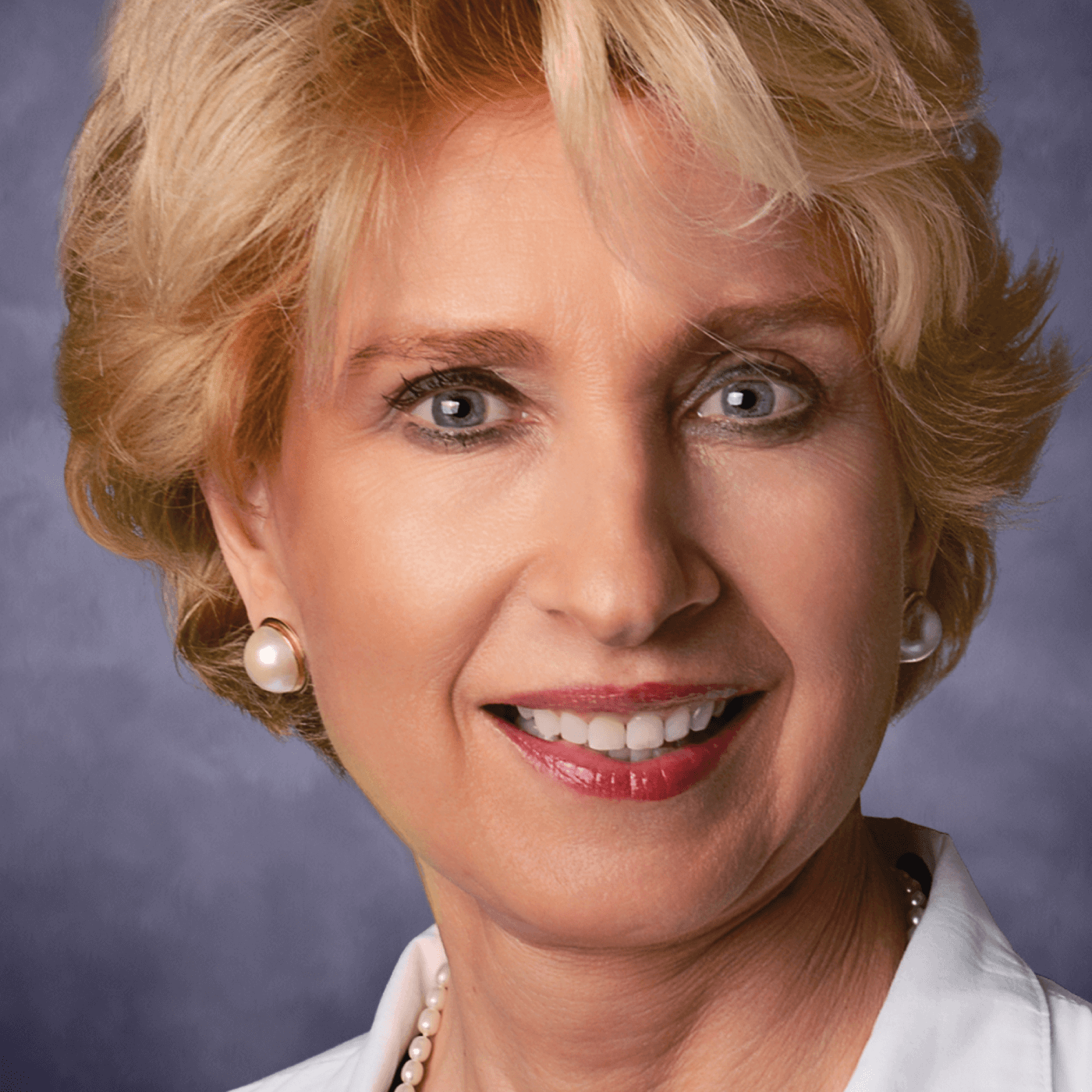
What is your take on the 2021 Power List, exclusively recognizing women’s achievements in ophthalmology?
JH: I think it was fabulous, a great idea and long overdue. Women have stories that are different, and so worth telling. It sets an example for those coming after us, and we need to urge them to aim high in every way we possibly can.
AL: If you asked me a few years ago, I would have said men and women were exactly equal and we did not need a separate list to acknowledge our achievements, but now I really see the hardships that women encounter. Due to my living in Israel and my position, I have not had to deal with a lot of them, but it’s important to highlight them. The fact that you gave space to 100 women has meant that many more of them had the opportunity to appear on the list than would otherwise be possible.
LW: It will give encouragement to many women who hadn’t been recognized previously. I also think that asking organizations to think more about the female nominations for this list might have given them an opportunity to re-examine themselves and not just nominate the usual people. It will probably make The Ophthalmologist aware of many more fantastic women in the field. With your huge readership, going to those people and asking them for contributions or to appear on panels will mean a lot to them.
CR: I think you would be surprised to know how many people look at the Power Lists to determine who they want on panels, as consultants, and involved in different projects. The all-female list will highlight women in general and perhaps we’ll get a few more female presenters at the Academy meetings, moderators, and committee members.
SJ: It is an exceptional and proud moment. It’s a great honor to be on the list, among such wonderful women. The list makes it clear how many powerful women there are in ophthalmology. That brings to focus what large role we play. I know the list isn’t definite, and there are so many more capable, exceptionally talented women in the field, and I think people will be encouraged to put those women forward for future lists, and also for leadership positions.
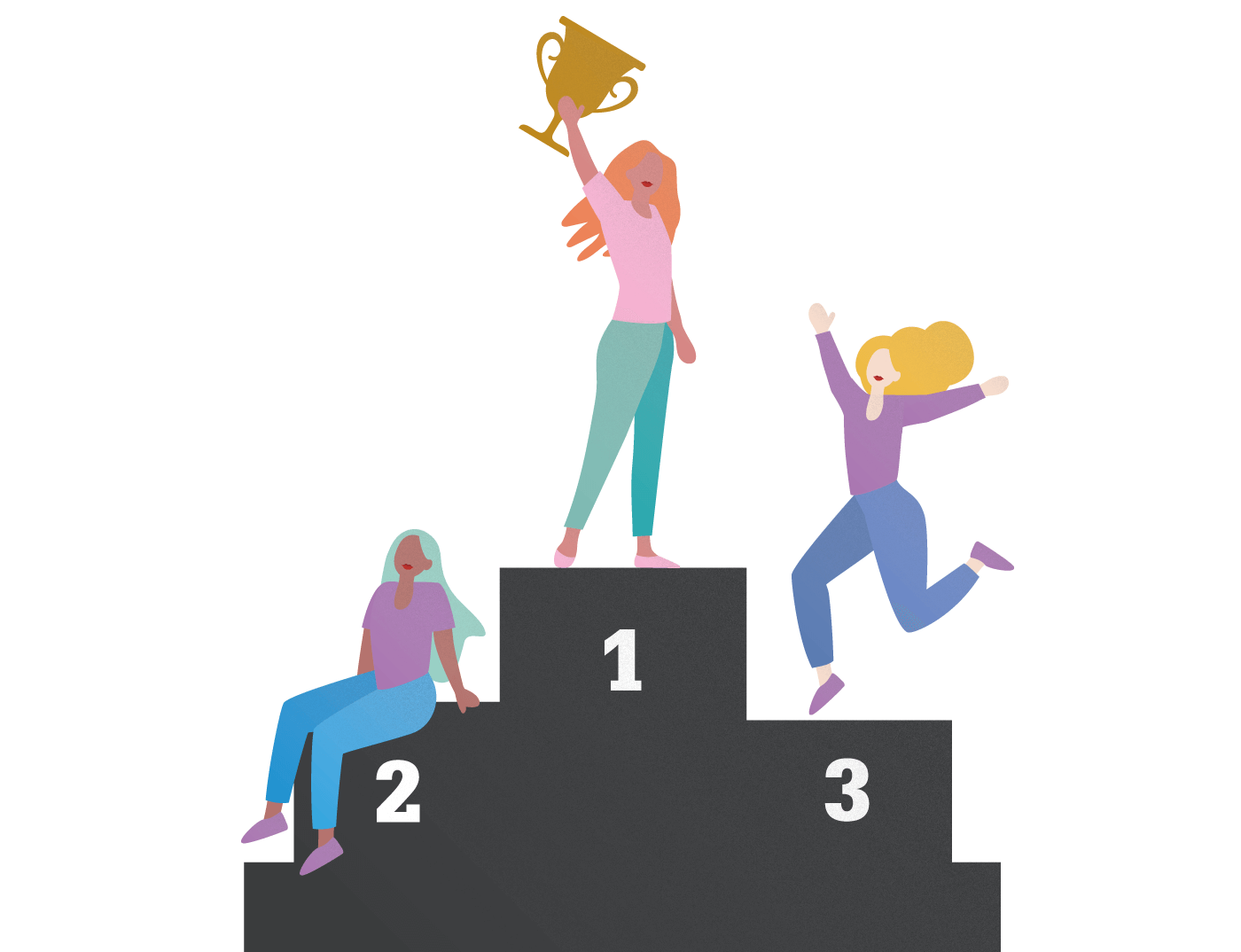
Did you encounter inequality in the field?
AL: When I started my career, it was a different world. I did my fellowship in retina at Hopkins, and in my second year, Julia [Haller] was going to be one of my bosses. I remember asking people about her, as it was so rare for a woman to be a vitreoretinal surgeon. Everyone said how brilliant she was, and I couldn’t believe a woman could be that good at this profession, even though I was going into it! I thought she had to be very old, and it was such a surprise to find out that she was a young woman. I thought she probably hadn’t done much research, and it turned out that she was one of the best retina researchers. So I assumed she would never let me touch a patient, and do a single vitrectomy, and on the first day with her in the OR, she said: “If I can do it, you can do it,” and, despite trembling with nerves, I did five vitrectomies with her. All my conditioned predictions turned out to be wrong.
LW: When I started vitreoretinal surgery and went to national conferences, there were three women in a room of 200 men, so it was quite intimidating. But, when I did my fellowship, there were four women in five posts. I remember hearing comments before we started about how it was bound to be a disaster: “someone’s going to get pregnant, then they will be off for a maternity leave, so how are we going to cope!” Actually, at the end of the fellowship, everyone commented about it being the most beautiful year they’d ever had, with everything beautifully organized. All the fellows ended up as consultants around the UK after their training.
SJ: It’s so interesting to hear experiences from women all over the world, in typically male-dominated societies. India is also quite a male-dominated country, but Kerala, where I’m from, is a very matrilineal society, which places a lot of importance on women’s education and equality. We don’t really see men getting preferential treatment. Nevertheless, when I started out at medical school, women were forced to wear long saris – a five-yard sari would be draped around me, and I found it very difficult to deliver a small baby wearing that much fabric, making sure all the folds were still in place, and the baby wouldn’t drop to the floor! Once, my friend bought a small bike, and she was the talk of the town, as it was the first time people saw a woman buy a bike. Despite all this, I felt that my male friends at medical school were very supportive and respectful.
CR: When I went from nursing, which was predominantly female, to engineering, it was quite a transition for me! I was once in class with one other woman and 83 men, and I remember the professor reading the list of names for the first time. It was Mr, after Mr, after Mr, and I knew that I wasn’t going to be happy if he called me a Mr, but he got both mine and the other woman’s names right, even though her first name was gender neutral. It wasn’t till much later, when I became a professor, that I realized that gender was specified on these lists all along!
I do hope that these days women who go into engineering do not experience some of the issues we faced. There has been a tremendous change over the past 30 years. When I began my career more than 30 years ago, it was hard for a woman to get attention. I had a strategy of saying things at meetings that I knew were true, but were also quite controversial. This would make people turn in their seats, heads would come up, and they listened closely to what I had to say. I would shock them first and then explain my thinking, and that’s really how my career took off!
When I was pregnant with my first child, I hid it for as long as I could, as it wasn’t well accepted. When I had my child, I was supposed to be off duty for the summer, but I was coming to work, bringing my son with me. One of the secretaries asked to see him, so I took him to the main office, and the director happened to be there. He looked at me and commented: “What’s wrong with this picture?” before leaving the room. I never kept pictures of my children on my desk – it was like I didn’t have any. Now, there are many women in biomedical engineering who work very closely with physicians all the time, so the perceptions have really changed. Men were an important part of this change; when I was in a graduate studies committee meeting, the chair was a man, and he let us know that we had to finish early as he had to pick his daughter up from day care. I’m glad he felt comfortable doing it, although I think if a woman said that, it would be perceived in a more negative way.
AL: When I was nominated to become chair of the department at the age of 40, the hospital director worried that I might be a bit too young as there were many more senior people in the department, but my gender never came to it. At the start of my career, I never felt that being a woman was a disadvantage. However, as I became more mature, and when I started following my daughter’s career, I realized that to get very far as a woman – be it chair, head of a lab, head of a clinic of hospital – you have to work endlessly, and be really exceptional in the whole field. I think that for men who are as talented or as hard-working, it is easier to achieve these positions. We have all had to hide pictures of our children, not pick them up from school, and be absolutely exceptional in our fields, to get to where we are now.
I understand this much better now than I did when I was younger; I thought there was no glass ceiling, no limit to what any woman could achieve. Now I realize that we can break those ceilings, but only by being the exception rather than the norm, and having the best capacity for what we do. I don’t have the capacity to become an exceptional engineer, so it is lucky that I chose a field where I could excel.
JH: I was well accepted in the ophthalmic community, but even now, when you look at panel discussions at events, there are many women in the audience – we have so many female physicians – but not as many on the panels. Some of our junior faculty put together a list of how many women gave presentations at retina meetings. What I noticed was that the more women there were on the organizing committee, the more women were asked to speak, and it’s similar for minority groups, too. What we are doing for women is just part of what has to be done for underrepresented groups worldwide. We need to make ophthalmology reflective of the population.
LW: When I reflect on my fellowship – yes, I worked extremely hard, but so did the men who I worked with. We were all expected to put in the same number of hours. Thankfully, I think now it is more acceptable for both men and women to leave work early and pick children up. I have to see men paving the way for this as a positive thing. I hope it will make it easier for everyone.
My biggest mentors were men who really wanted me to succeed – I was able to “stand on the shoulders of giants.” Bill Halewood, my mentor at Moorfields, was a phenomenally talented surgeon; always supportive and encouraging. It has often been the men with a more progressive view of the world who helped us throughout our careers, and I think it’s important to recognize it. And now, hopefully, we can have the same impact on the women who will come after us!
AL: To add to the comment on discussion panels – all of us sit on panels all the time now, almost daily! But I’m usually the only woman on a panel, occasionally there is one other woman there, who is also a renowned surgeon. It’s similar with advisory boards, which still have too few women on them.
JH: I see your point about the hard work needed; there is a need to have “fire in your belly” to get far in our field as a woman. I often tell our residents and fellows about all the science that has emerged since we were their age, pointing to differences in psychology and conditioning of women and men. I wish I knew from the beginning of my career about what Sheryl Sandberg writes in her book, Lean In. A few years ago, a resident came to see me and said in passing: “Wish me luck, I’m on my way to negotiate my contract.” I said absent-mindedly: “Just make sure you don’t accept the first offer.” She was stunned and asked why I said that, and it occurred to me that I failed her in not explaining previously that as a woman, she was bound to accept the first offer, and not negotiate, and that I had not encouraged her to read up on it. When I was leaving Johns Hopkins, the dean was debriefing me, and when told about a position I regretted not getting, he asked if I had put my hand up and said I was the right candidate… I then realized that I had not been emphatic enough about the things I wanted, and that this was something I still had to learn.
SJ: Women often feel like they shouldn’t ask for what they want, and they should patiently wait for things to come to them. This sometimes stops them from reaching their maximum potential. Of course, we have to work hard and excel in what we do, but it’s important to remember to express what we need and want, go after it, and not just sit back and wait.
JH: I think that many women think they have to make a choice between career success and family, so they’re willing to accept less so that they can have a family life. This choice was explicitly presented to me when I was young, and I wouldn’t accept it; I thought that there was no reason why you couldn’t be successful and rise to the top of your career while raising a family.
AL: I have a very strict idea on this issue – in order for me to be able to pursue my career, I need harmony at home, and I need the whole family to be happy with what I’m doing; that includes my husband, my three children, and my five grandchildren. When I was working on my publication record, I did a lot of toxicity studies in animals. I was doing electrophysiological studies on rabbits in the north of Israel, about an hour’s drive from my home, after finishing my clinical work. I would do a half-hour dark adaptation for the rabbits, work for a couple of hours, and then drive home and get in around 8 pm. Then, my mentor decided that we had to switch to rats, which needed three hours of dark adaptation, and that meant that twice a week I wouldn’t come home until midnight. My husband said that he couldn’t cope with it, and I knew that I had to give that up – it was just too much for my family. That is the trade off – I can pursue my career, but I know that I need the family to be happy so I can put all my energy into my work.
LW: Women should always be honest about the choices we make throughout our career; sometimes your work-life balance needs to change for a while, and then when children are older, it will change again. Also, it’s important to get help – get someone else to do the cleaning, so that you have more quality time to spend with the family. I outsource as much as I can, so I have more time for the nurturing, which nobody else can do for my family but me. You have to decide what adds value to your family life, focus on that, and get help with other things. We have to accept that there are only 24 hours in the day, and whenever we take something on, we make a choice about something we won’t do. Many women are very organized and great at multitasking, playing different roles at the same time, which means sometimes we can achieve more in 24 hours than others, but we still only have 24 hours every day.
I try to be honest with younger women in the profession when they ask me about career and work-life balance; I tell them every woman can achieve success and have a family life, but we have to make our own choices over what is important to us and what isn’t. That might mean that you’re a great clinician, but you decide to leave research for five years, and then go back to it. You have to allow your career to go through different phases, and choose your own rhythm. It should always be OK for us to say that that’s what we’re going to do. We have to remember that just like not all men are the same, not all women want the same thing, so some won’t feel the need to have a family or do research, and others will. As long as it’s a positive choice, it should be fine.
JH: Barbara Judge, a British lawyer, entrepreneur and international banker, who died a few months ago, famously objected to the term “work-life balance,” because it implied that work was separate from “life.” When you really love your job, it’s part of your life – part of a mix.
LW: I agree. They say that if you do a job you love, you will never work a day in your life. People sometimes choose a profession based on the fact that it’s “family friendly,” but my advice is to always choose what you love, as it will keep you invigorated and enthused, and that’s the most important thing about your job.
CR: Women sometimes talk about “having it all,” and I really hate it, as it sounds selfish and entitled. You can’t “have it all” and men wouldn’t talk about it in those terms. You have to live to your fullest potential, whatever that is.
LW: At a national conference, we had a session with a theme of “How to do VR and still have a life.” The topic was suggested by women, and we thought we would have a high female turnout, and actually many more men came. We shouldn’t make an assumption that men don’t want to have the option of leaving work early and picking up children, or doing something else they want to. It’s very much a generational thing.
CR: In my engineering career, one of the biggest hurdles is having male colleagues who have never had to worry about home life. They have incredibly competent partners, who could’ve done anything – could’ve ran the world – and they ran their households. I’m often stuck with their husbands who are great at their jobs, but they have no real concept of life outside of it. It definitely is a generational thing, and the world is gradually moving in the right direction. Increasing involvement of women into our fields has allowed men to see what’s possible.
SJ: In India, dynamics are different in different families, but I have always had the support of my husband in everything I’ve done. He’s helped me along, given me suggestions on how to go about things, and never held me back from anything. It has been the same with my boss, Amar Agarwal, who has always encouraged me. Like Anat said, it’s important to have peace at home and in your workplace, as it allows you to reach your natural potential. Like Louisa noted, you have to delegate what you can, and only do what you must – that will be more than enough. This applies to your home and your office, where you can often delegate work to your juniors, residents, who will be happy for the opportunity to participate in your work.
Having to give up on a family should never be a part of being a successful woman. You need support from those around you, including those in your life, and male and female colleagues. I have wonderful colleagues in my department who are always ready to step up and help when it’s required. My daughter is actually sitting right here with me, as I wanted her to see the discussion with all these beautiful, powerful women, and I’d like her to know that it’s possible to do well in your career and in your family life.
AL: I see this generational change in my daughter and two daughters-in-law. In all their families, there is a combined responsibility for providing for the family and making a home.
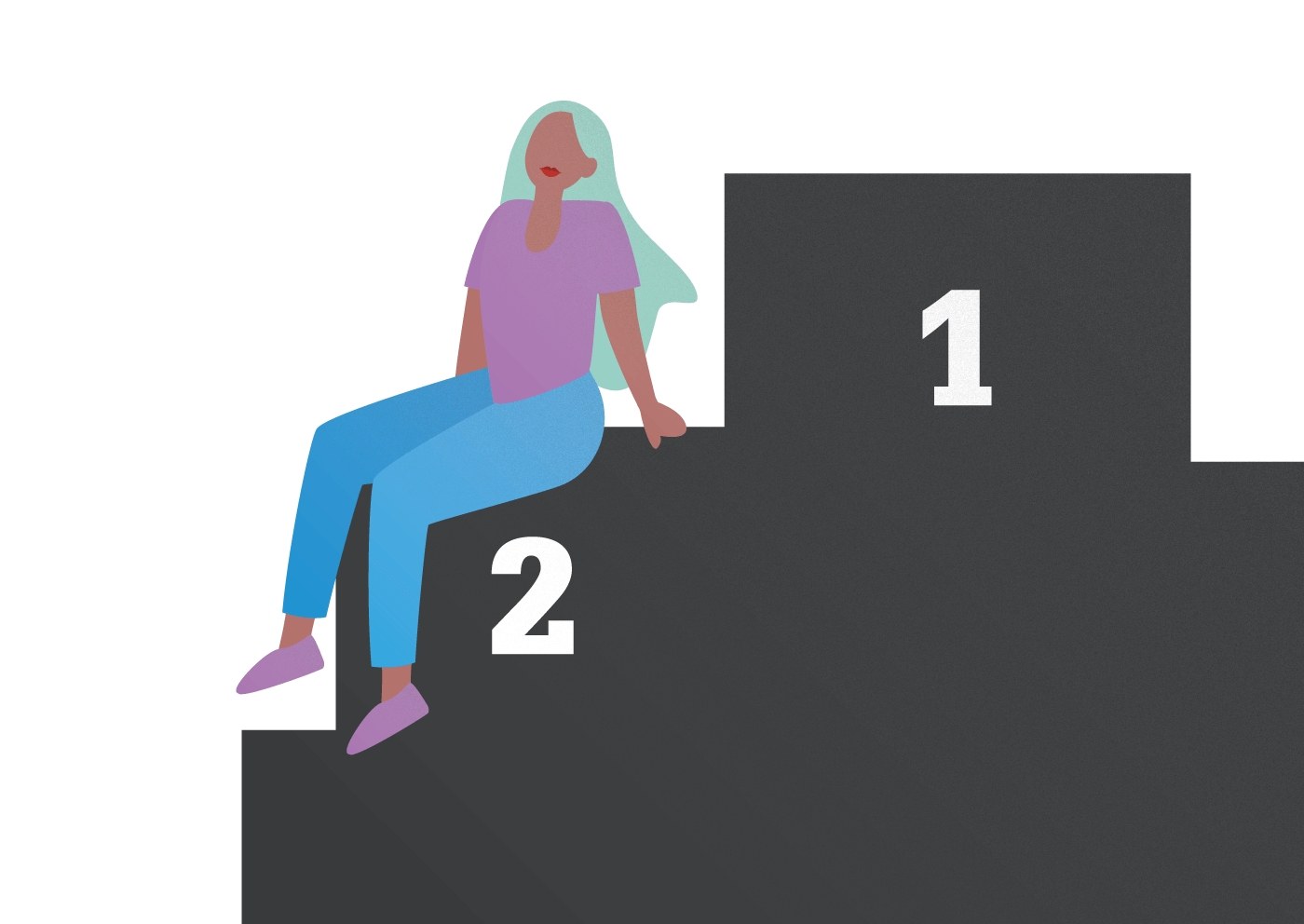
How did you find the right balance between clinical practice and research?
JH: For research and teaching, you need the right environment, and patients often demand your full attention, and have to be taken care of immediately, so a very busy clinical career doesn’t always lend itself well to bench research, although there are a few people out there who are organized enough and have support systems to be able to do it all.
Clinical research has allowed ophthalmology to become the most exciting field in medicine, with so many advances. We are lucky that we can go from bench to bedside, and often be on the bedside end of the research spectrum, and it’s very satisfying to combine clinical care with enrolling patients into clinical trials. It has kept me interested in the field, and I think it feeds into my patient care as I’m able to offer patients the very latest treatments, and give them realistic hope in some very bad situations.
AL: I always felt that I shouldn’t give up research because of clinical overload, and I was able to pursue it throughout my career. Rather than, for instance, seeing patients in the hospital in the morning, and privately in the afternoon, I chose to do work in research labs in my afternoons. I feel that this has made me much more effective in my clinical work, as I see complicated patients, and do complicated surgeries more often as a result of doing research. My mentors and department chairs always taught me to choose research that would enable me to find better treatments for my patients, knowing the latest innovations in the field. I wanted to pursue an academic career and not a clinical one first, so that it would give me more independence when I got to a high position, but I don’t see pursuing research to be in conflict with clinical work – I see it as one influencing the other in a positive way.
SJ: Both research and clinical practice go hand in hand for me, too. I work in a hospital known internationally for its cutting-edge innovations and research, and it was that way already when I joined. This encourages staff to think about creative solutions when they see a difficult case in their clinical practice. The fact that the place you work in values innovative solutions really matters, as you should not feel like coming up with something new and creative is going to be frowned upon. Of course, there will always be a discussion about your new approaches – considering ethics and practicalities, but you should have the freedom to express yourself, and be encouraged to pursue your choices. Ophthalmologists have to realize that text books keep changing, and that something that was the right approach a few years earlier, might soon be replaced by a new standard. When I see a patient, I wonder whether a less common approach might give them a better result.
LW: I’ve done it both ways: I took two years to focus on research in the middle of my training, which is quite common in the UK. It really got me thinking about things creatively. So much of what drives your interest in research and what gives you good ideas comes from seeing patients and getting frustrated about the lack of available options. Many great observers of clinical signs who put them together and find the connections fuel amazing research. When I started my career, the regulatory framework was more forgiving for people who pursued both research and clinical practice, and now – quite rightly – there is much more infrastructure and governance around it, which makes it more difficult to combine the two than some of us would like it to be. Currently, I have one day a week dedicated to research, on top of my clinical practice, and it allows me to keep things going. In an ideal world it would be more like 50/50, but then something else I love would have to give – it’s not easy to achieve and keep the right balance.
AL: Allocating time for research is crucial, which I learned already during my fellowship at Hopkins. When I became chair of the department, I devoted one day to research, one to organization, one to the clinic, one to the OR, and one to university work. I’m not able to keep it this way 100 percent of the time, but it’s important to have this structure in place.
How did leadership opportunities come your way?
CR: When I joined the Department of Ophthalmology in Ohio, there were a lot of clinical trials going, but not much research similar to what I was doing, so overseeing it was a natural position for me to take. Then, I found myself to have been at the department longer than almost anyone else, so – again – a leadership position was quite natural. As I mentioned, my father told me to take advantages of opportunities presenting themselves, and I did.
It’s really important for me to take an active role in training the next generation – they are the future. I spend a fair amount of time with ophthalmology residents, whose required component of residency is research, and even if they don’t plan on taking an academic position, I tell them that they have to know what to incorporate into their practice when they finish their training. I’ve had former residents track me after several years at major meetings, like the AAO meeting, to ask my thoughts on some exhibits. Training future physicians, letting them know how important it is to be well versed in current literature, and to publish research, feels like a crucial part of being a leader.
JH: For me, it was a gradual process. At school, I was top of my class and a school president – a high achiever – and I always liked running things. I was also the first female chief resident at Wilmer. All these positions inevitably come with the impostor syndrome, but we have to fight it hard. Once you find that you’re doing a good job in your current position, it’s easier to go for the next one. Today, it might paradoxically be harder for young women, as they don’t have to fight so hard. I felt like a pioneer, and that it was incumbent on me to work harder to stand for my gender, whereas if many opportunities come your way when you’re younger, you can get overwhelmed and overloaded because you try to take on as many of them as possible and not say “no.” I’m now at a point in my career where it’s a challenge for me to say “no” and I have to figure out what the essential things are – where I can make the biggest difference.
I always have a To Do list. I often feel like I’m never getting through my work, but then I will find an old To Do list and say to myself: “Yes! I really found the time to do it all!” and I’m proud. Then I go back to my current list and see all the things left to do and find the energy to do the things that need to be done.
SJ: My siblings and I were all taught to be strong personalities, to never shirk from responsibilities, and to take challenges head on. The sort of discipline we saw in our parents really inspired us to take on leadership posts. My research and my innovations really helped me get many opportunities. Remember, all the effort you put in over the years – all the extra work you do over and above, and the extra experience matters a lot. If you keep on researching and publishing, people come to know about you. I have a YouTube channel where I post surgical videos, and it’s extremely popular, with more than 10,000 subscribers. It has given me a lot of recognition, and people come up to me at conferences to tell me that they check the channel before they do surgery, to the point where their partners wonder whose voice it is they hear every morning before surgery. This recognition can lead to leadership positions, so make sure you show the world what you do and what you’re capable of. Managing your team is also vital – how much time and importance you give to every single person, all the way up from your juniors.
LW: Becoming Medical Director of Moorfields has been a baptism of fire of sorts, but I go back to what Anat said about being able to make a difference for many more people, and not just one patient at a time – and that’s what leadership means for me. The feeling you get when you develop a new pathway, reduce patients’ waiting time or improve outcomes because you have trained the staff, organized everything, got the right funding, purchased equipment… it’s really powerful.
I was Chief Surgeon at Moorfields throughout the first year of the pandemic – a time when leadership was really in the spotlight. How you led your organization through a period of huge uncertainty – particularly for ophthalmologists, as there’s a lot of evidence that we get very up close and personal with our patients and are therefore potentially more at risk – showed what kind of a leader you were; whether you stayed in the hospital to help staff and patients. I think that’s when female leadership really came to the fore, as I do consider female leaders to be more empathetic, more collaborative, and listening to others.
Since I became Medical Director, I’ve had nothing but support from my staff. No two days are the same; there are always new challenges. We are now in the process of building a new hospital, so there are many strategic decisions to make. I love it and consider it to be an amazing honor to have people’s faith put in me. As a leader, you have to show authenticity and courage of conviction, which doesn’t always make you the most popular person in the organization, but should earn you respect.
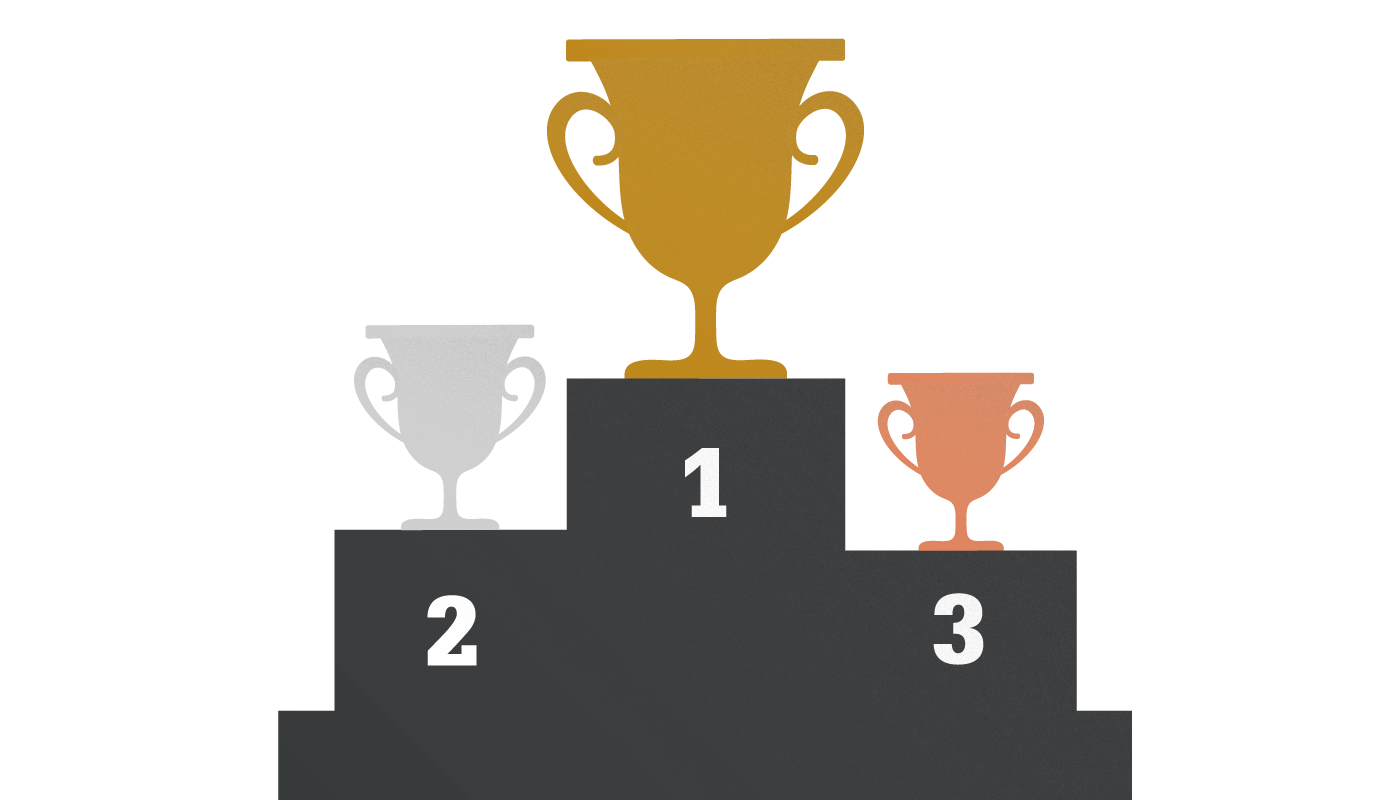

What do you think the future has in store for you?
JH: The COVID-19 pandemic has been such a challenging period to live through that I wouldn’t have chosen it in a million years, but at the same time, we don’t want to waste that crisis, and we have to use what we have learned in the past few months. We have been catapulted into teleophthalmology, and we learned how to streamline operations and have fewer people coming through the hospital.
I wrestle with a lot of unexpected opportunities that come up, and some of them involve moving out of ophthalmology and into medicine as a whole – such as taking on a deanship – or even moving into drug and device development. It’s been interesting to serve on corporate boards, where I can look at ophthalmology from a different angle.
I wake up every morning wondering what new and exciting things are going to happen that day. Sometimes it’s a difficult challenge, but most things make me excited. I’m very optimistic about the future, and I think a lot about the breakthroughs that will happen over the next 10 years, and what difference they will make in addressing our patients’ unmet needs. This thought keeps me going.
CR: I work a lot in interpretation of current ophthalmic devices and adding new analyses to provide quantitative metrics for physicians, and I consider ophthalmology to have been a little late in getting heavy technology involved, but now things are moving at a very rapid pace. We’re at a crucial point of medicine and technology merging, so I’m really excited about the future and the students we are training.
AL: I have always been interested in early detection and monitoring of patients, and I now see self-monitoring as a huge opportunity. Home monitoring will be extremely important in retina, in ophthalmology, and in medicine in general, and I’m so happy that I’ve been involved in and leading this field for many years. I also see a great future in patients being in charge of their data, test results – having control over it all.
LW: The digital explosion that we’re going to see over the next few years is bound to lead us into some unexpected directions. We have transformed more in the last six months than we would have done in six years otherwise. The pandemic has driven us to reimagine and re-examine how we deliver eye care. We now have to work out safe ways to deal with backlogs of patients. I’m intrigued to see how we change our environments and pathways. I see us working more closely with engineers and architects to develop new ways of seeing patients.
We have also been a lot more collaborative than in the past. Many organizations and institutions have been sharing knowledge and trying to ensure that we minimize health inequalities. We will continue to transform, and AI will be a big help in sifting through patients who are safe and picking those who we need to take a closer look at.
We have announced a project called Attend Anywhere for our A&E department, and a large number of our patients now have virtual consultations before they decide whether they need to come into the casualty department.
SJ: I don’t think there’s a limit on how much technology can advance with respect to helping to treat the eye, with all its biomechanical properties and layers, and visual and refractive properties. Another thing that I find very exciting is preventive ophthalmology – continuing to lower the bar for diagnosing a disease as early as possible and preventing it from advancing. It’s extremely important. I also think that lasers are going to grow in importance in every field. I look forward to looking at every patient who comes in in a new way and wondering what I can change in my practice to make their eyes better. I just want to keep innovating.
